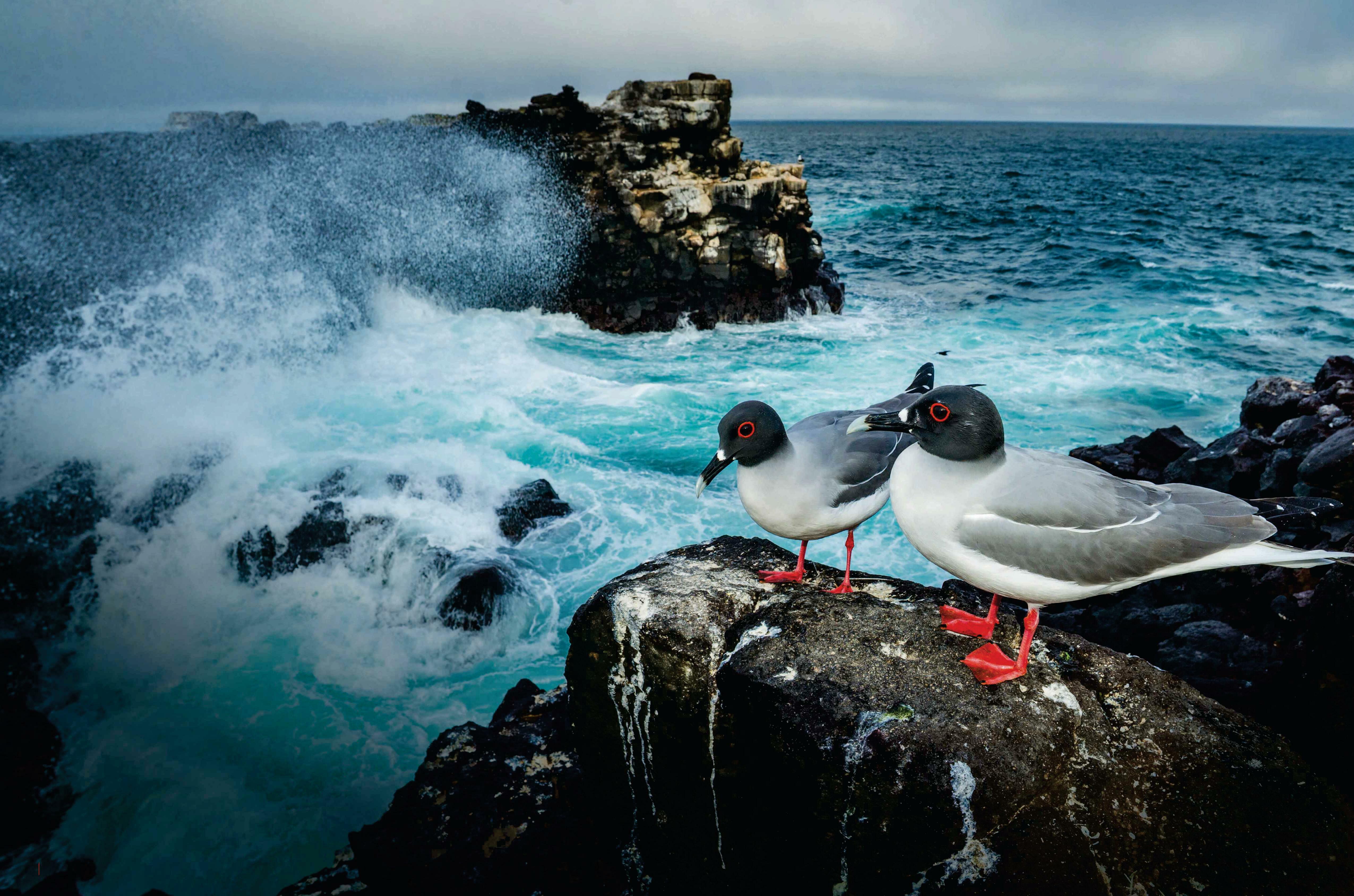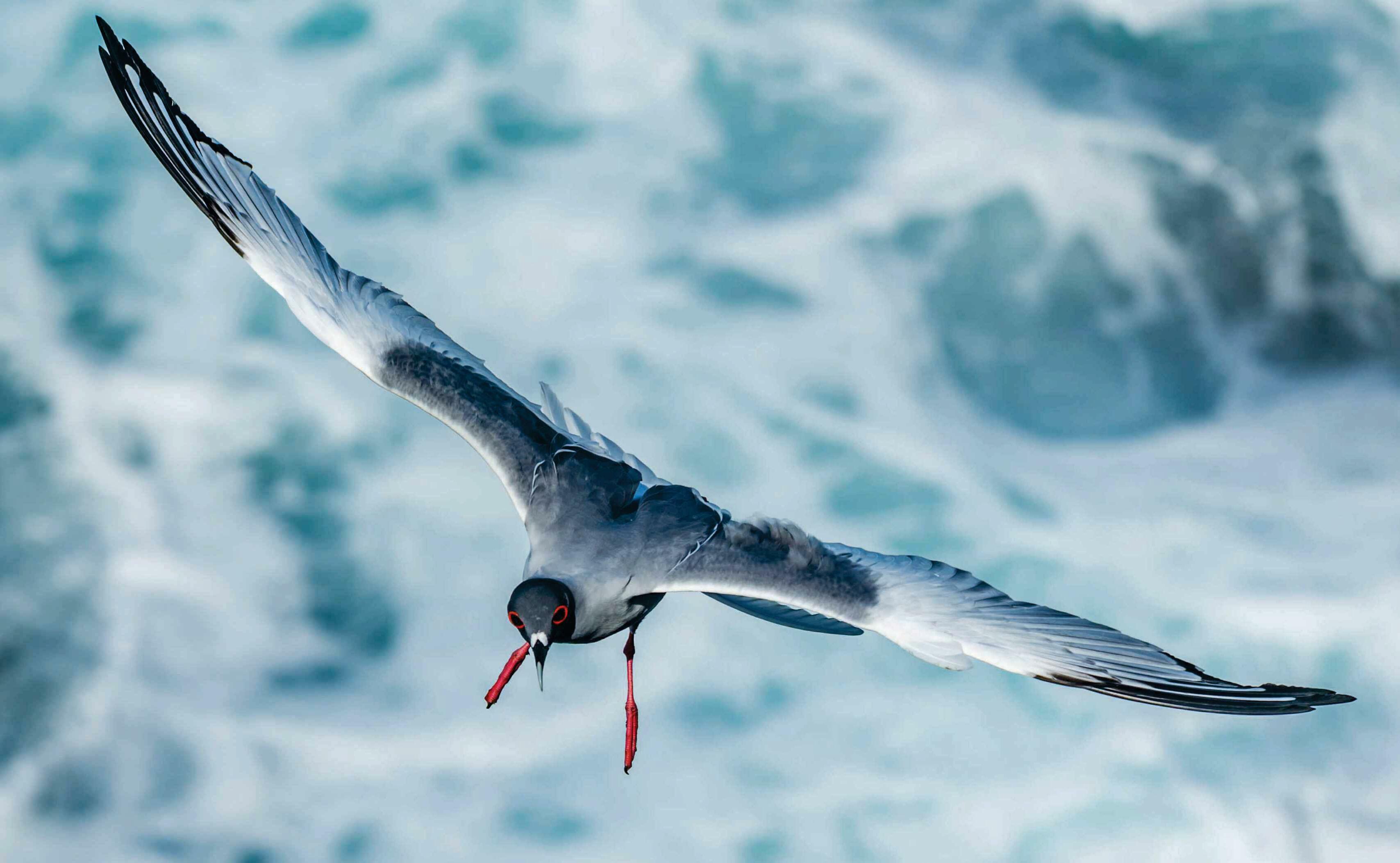Try GOLD - Free
THE MYSTERIOUS OWL GULI
BBC Wildlife
|October 2025
Far away in the Galápagos Islands, a peculiar nocturnal seabird is finally starting to give up its secrets

GHOSTLY WHITE FORMS DRIFTED LIKE white handkerchiefs on the brisk night breeze, dipping, rising, flapping, turning and tumbling over an inky black ocean. My small sailing boat rocked gently on the waves, while a handful of stars blinked between the clouds above. The shoreline lay some 30km ahead, just visible as a faint smudge on the horizon, but my gaze was fixated on these spectral beings in constant motion.
That experience was more than half-a-century ago and remains one of my favourite teenage memories. I was living on the Galápagos – as I still am today – and, back then, moving between the archipelago's islands involved hand-steering from the open cockpit of a small boat. I was just 17, working as a naturalist and deckhand, taking the first very small groups of visitors to see 'my' islands. We travelled at night so we could spend the days exploring on land. Those white handkerchiefs over the sea were in fact swallow-tailed gulls (Creagrus furcatus), found only in the Galápagos and in tiny numbers on Malpelo Island, off Colombia, some 1,600km to the northeast. And they weren't aimlessly blowing past the boat: they were hunting - in near total darkness.
I watched them for hours that night, barely visible in the dim glow of the navigation lights, swooping down and back up with extraordinary agility. They emitted strange, shrill crackling noises, mostly when they suddenly dipped low over the lightless sea surface. It was utterly captivating.

This story is from the October 2025 edition of BBC Wildlife.
Subscribe to Magzter GOLD to access thousands of curated premium stories, and 10,000+ magazines and newspapers.
Already a subscriber? Sign In
MORE STORIES FROM BBC Wildlife

BBC Wildlife
SNAP-CHAT
Isaac Szabo talks hellbenders, chub nests and bears on the roof
3 mins
December 2025

BBC Wildlife
Why are the tropics so diverse?
AS YOU MOVE FROM THE POLES towards the equator, species richness increases.
1 mins
December 2025

BBC Wildlife
Magnificent frigatebird
ONE MIGHT BE FORGIVEN FOR thinking that pterodactyls had been de-extincted upon first sighting the silhouette of a magnificent frigatebird.
3 mins
December 2025

BBC Wildlife
YEAR OF THE CAT
Once a phantom of Chile's windswept peaks, this plucky feline is making a comeback
3 mins
December 2025

BBC Wildlife
KATE BRADBURY
“I feel I am part bird at this point at the year's end: I'm ready for spring”
2 mins
December 2025

BBC Wildlife
SNOW DAYS
High in the boreal forests of Colorado, the snowshoe hare lives a secretive life. But one photographer has gained a unique window into its world
3 mins
December 2025

BBC Wildlife
A journey into sound
Progressive hearing loss prompted a memorable quest to absorb nature's calls and choruses
7 mins
December 2025

BBC Wildlife
WILD IN THE CITY
A huge parliament of long-eared owls has made an unlikely home in a Serbian town square
2 mins
December 2025

BBC Wildlife
Birds follow the flames
In the Sierra Nevada of California, fire gives some birds a boost
1 mins
December 2025

BBC Wildlife
Remembering Jane
The ethologist, conservationist and humanitarian Dr Jane Goodall died in October. We reflect on the woman who gave the world hope
5 mins
December 2025
Listen
Translate
Change font size

